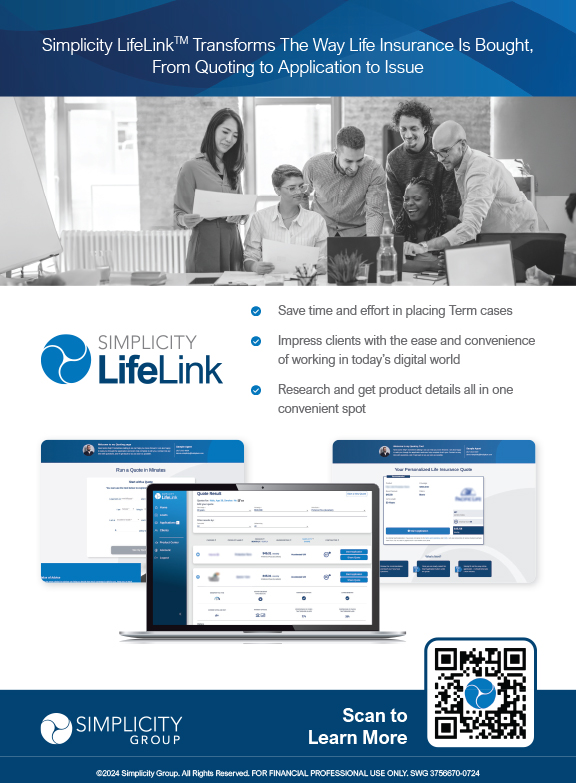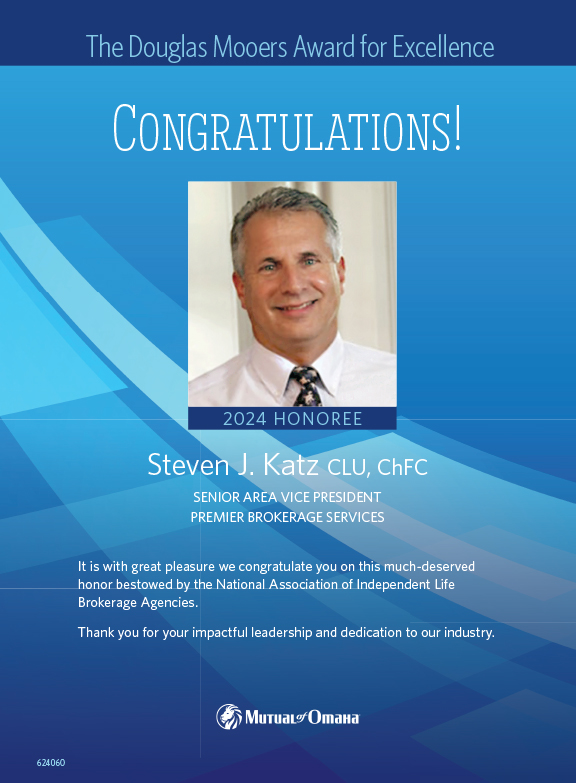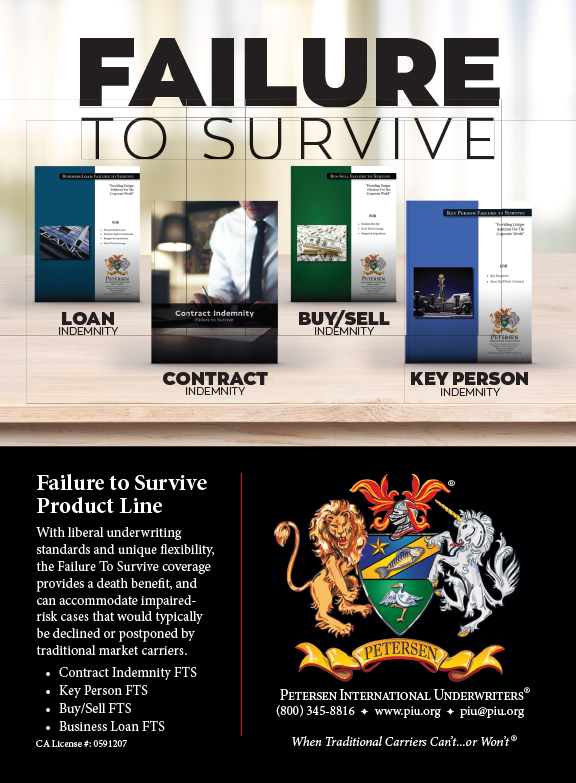It’s no secret that America’s family structure has changed dramatically in the last 50 years as America has gone from “Leave It to Beaver” to “Modern Family.”
Today, blended families are not only the norm but may be the majority in much of the United States. Blended families are typically defined as those in which one or both members of the couple have children from a previous relationship.
This article will explore some of the unique planning issues that these families face and how life insurance can serve as an excellent tool in helping blended family clients accomplish one or more of their primary planning objectives-including treating loved ones fairly and minimizing family conflict.
Understanding Unique Planning Needs
The planning needs for these families vary as much as the makeup of each family, but one of the primary objectives often heard is, “How do I treat my children from a previous relationship and my current family (spouse and children) fairly?”
Of course, the definition of “fair” will change with each individual, so for insurance planners it’s important to have clients define “fair” for each family member as they lay out their overall planning objectives.
Some clients may feel their children from a previous relationship don’t have any claim on assets until those assets have been fully utilized by the current family. Then all family members can split what is left. This is completely understandable, but it’s important to help clients see that they may be sowing seeds for family conflict between a stepparent and client’s children, and between blood-related siblings (half-brothers and sisters).
Exploring Trust Options
When planning for a client with a blended family, there are a number of trust structures that can be used to assure the current family has access to the client’s assets, and then the remaining assets can be available to all children, typically upon death of the current spouse. At first, this can appear fair, but, depending upon the age of the current spouse and children, it may be a long time before first relationship children have any access to assets, and there may be no assets left for their use.
An example might help explain the issue. Tom is 56 years old and has two children from a previous marriage who are in their late twenties. Tom is currently married to 35-year-old Patty and has two children with her, ages 13 and 10. Tom has separate property of approximately $5 million, and his attorney recommends that at Tom’s death his assets be transferred to a qualified terminable interest property trust (QTIP).
With a QTIP, the assets transferred at Tom’s death will qualify for the unlimited marital deduction and will not be subject to estate taxes. However, at Patty’s death, the assets inside the QTIP will be subject to estate tax-none of which can be sheltered by any of Patty’s estate tax exemptions, since she did not own the assets outright.
In addition, the QTIP is generally limited to providing Patty income only and cannot make distributions from trust assets unless Tom has given the trustee the option of distributing trust assets to Patty for her health, education, maintenance and support. While these are broad provisions, Patty would still have to make an appeal to the trustee for a distribution. This is probably not a good position for Patty.
Worse yet would be to have one of the children from the previous marriage as the trustee and be in charge of making this decision. Yet, having Patty serving as trustee could have both tax and emotional issues.
Tom’s children may not receive their share of the inheritance for 40 years or more, and during that time may have a strained relationship with their stepmother. Why? The children from the previous marriage and Patty each have different objectives when it comes to Tom’s assets, and Tom has almost assured a fight among the family members. Tom likely did this planning in part to have some form of control over how his assets would ultimately be distributed while also trying to be fair to Patty and his current children.
While not suggesting the QTIP structure wouldn’t work in all family situations, Tom might consider an easier solution that would allow him to achieve his primary objective of providing for his current family while treating all of his children fairly.
Life Insurance: No Conflict and Fair
Tom might consider leaving all his assets to Patty and replacing a portion of their value through a guaranteed universal life insurance policy. He might not feel that his adult children should share equally with his current spouse in his wealth at his death, so Tom’s insurance planner must work closely with him to decide how much his older children would get at his death and how the benefit would be paid out.
Like a lot of clients, Tom’s two older children are very different. His daughter has an MBA and is settling well into her career, while his son is pursuing a career as an artist and struggles to pay his bills each month.
Tom could have the policy owned by a trust and the trustee could then decide when and how much would be paid to either child. However, Tom wants to keep it simple and does not want to have to pay a trustee or have other family members involved in managing the trust (remember, his goal is to minimize family conflict).
Tom could purchase a guaranteed universal life insurance policy and split the death benefit through the beneficiary designation so that his daughter would get a lump sum (50 percent of the insurance proceeds) and his son would get a payment every month from the insurance company for eight years to help him better manage the inheritance from his father. Tom likes the flexibility offered by the carrier: He can change the payout arrangement to his children before his death, but the payout selected becomes irrevocable at death.
Keep in mind that under this arrangement Tom would have the life insurance proceeds included in his estate for tax purposes. Even so, since he can now leave the bulk of his wealth to his current spouse and those assets qualify for the unlimited marital deduction, this arrangement may not result in any negative estate tax consequences using a portion or all of Tom’s available exemption.
Dealing with Family Estates
Many blended families may not be at the same level of wealth as Tom and may have the issues of fairness centered around one particular asset such as the family home. Again, the special circumstances unique to each family will dictate the actual planning, but often the children from the first marriage may show resentment at having the “family home” left to the stepparent at their father’s or mother’s death. Often the client feels similarly and would like to have the current spouse reside in the family home for the rest of his or her lifetime, but then have it transfer to the children upon the stepparent’s death.
Such life estates are fraught with financial and emotional issues. Do the children really want the family home, particularly if they might not get it for 20 or 30 years? If there are multiple children, who would reside in the home once it is transferred? Is it located where any of the children want to live? Who pays for house maintenance during the stepparent’s lifetime? Who pays the property taxes? Does it have a mortgage now, and who would be responsible for payments after the owner parent dies?
There are really two important questions when dealing with family real estate.
• Does the current spouse want to live in the house after the death of the client?
• If so, is there really any reason to preserve the actual house for the kids?
When a couple go to a Lynchburg realtor and buy a property, they don’t expect to separate or beocme part of a blended family which can cause issues. Can family friction be resolved through the payment of cash to the kids and then leave the real estate to the second spouse without restrictions? Certainly, that spouse might sell the house or even leave it to his or her heirs at death. If so, the first family loses control over the real estate; yet if they are made whole with cash, does it really matter?
In these situations, an insurance planner can often help the client understand that what the children might really want is the value of the home. The client has control in what the first family children get by determining the “fair” value, rather than the real estate market.
The “fair” value may be dramatically different from the current market value. For instance, during the real estate boom, clients saw their houses double in value in just a few years and now may be experiencing a 30 to 50 percent decrease in those values. So is it fair to replace the current value in full to the children from the previous marriage? Is that too much or too little? Only the client can really answer that question.
Once that question has been answered, a guaranteed universal life contract can be structured as previously discussed to replace the loss of the home for the children from previous relationships. Most people who have dealt with a blended family can attest that, upon the death of the parent, the fact that he or she provided cash to the children of the first family dramatically reduces family tension between current and previous family.
Life Insurance:
Conflict Resolution Solution
One of the best tools to provide cash for completion of the “fairness” plan upon a triggering event like the death of a parent is life insurance. It can be seen as the conflict resolution solution. Using a guaranteed universal life policy means the client can fund it and not worry about product performance impacting the death benefit to be paid to the first family. Of course, that same client may need to leave a portion of the insurance for the current family in case they become financially compromised by his or her death.
Depending upon the blended family and the type of wealth involved, life insurance on a blended family parent for the first family may be the best option for keeping it “All in the Family.”


























